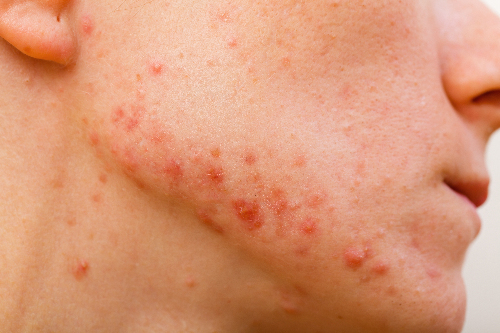Event strives to show that acne isn’t just for teenagers
At this very moment, nearly five million college and university students are struggling with acne in Canada, according to The Acne and Rosacea Society of Canada.
Acne, which is often thought to be only common during teenage years, is also reoccurring among adults. To shed light on this important topic, The Acne and Rosacea Society of Canada is introducing the nation’s first Acne Awareness Week taking place from Sept. 14-20.

According to the Acne and Rosacea Society of Canada, about 22 per cent of women suffer from adult acne, compared to only 3 per cent of men. More women suffer from adult acne due to hormonal influences that occur during their menstrual cycle. Common signs of acne include red bumps and pus-filled pimples that appear near the jawline, on cheeks, chin and neck. For some, acne can also appear on the back or chest.
As many of us have experienced, acne can have a negative effect on one’s self-esteem and emotional well-being. About 10 per cent of individuals face depression due to acne while more than 40 per cent of students and workers have reported poor concentration due to their acne, according to a study conducted by the Acne and Rosacea Society of Canada. Many adults struggle with this issue for years, and genetics can play a strong role on the severity of their problem.
Dr. Benjamin Barankin, a spokesperson for The Acne and Rosacea Society of Canada and Medical Director & Founding Dermatologist at the Toronto Dermatology Centre, said that while stress and diet can aggravate acne, it is mainly due to hormones and genetics.
There are many ways to treat adult acne, he said.
“Try some over-the-counter products that contain ingredients like benzoyl peroxide and/or salicylic acid,” Barankin said. “Use a mild cleanser once or at most twice a day, apply sunscreen every morning and consider exfoliating once or twice a week. If after three months you are not seeing sufficient improvement, go see your doctor and if possible, your dermatologist.”
Other treatments include prescribed creams and pills, laser treatments, chemical peels, facials and microdermabrasion, said Barankin.
Specific types of makeup can also help, he added.
“Try to wear mineral makeup that [is] labelled non-comedogenic,” Barankin said. “Ideally we can clear your acne so that you can wear makeup for as little time as possible. There are no particularly harmful ingredients in makeup.”
Acne scarring can also be a problem. Barankin said it is best to consult a dermatologist to determine the type of scarring that you have, which will then determine the best treatment. Scar treatments include medical-grade chemical peels, laser resurfacing, subcision, filler injections and microneedling, he said.
“It’s also very important to get your acne treated and under control as there’s no point treating scarring if you’re still developing acne, which can lead to new scars,” he said.
There are many myths about acne that some might have heard: “You just have to get through it” or “acne will go away on its own” or “nothing can be done about acne.” Acne Awareness Week was created to bring awareness to those struggling with this common skin condition, but also to promote the facts.
“We need to get the facts out in order to improve the lives of those with acne,” Barankin said of the importance of Acne Awareness Week. “For example, if acne is affecting your life, there is no need to suffer through it. Acne can be successfully treated in virtually every case.”
For more information, visit acneaction.ca



